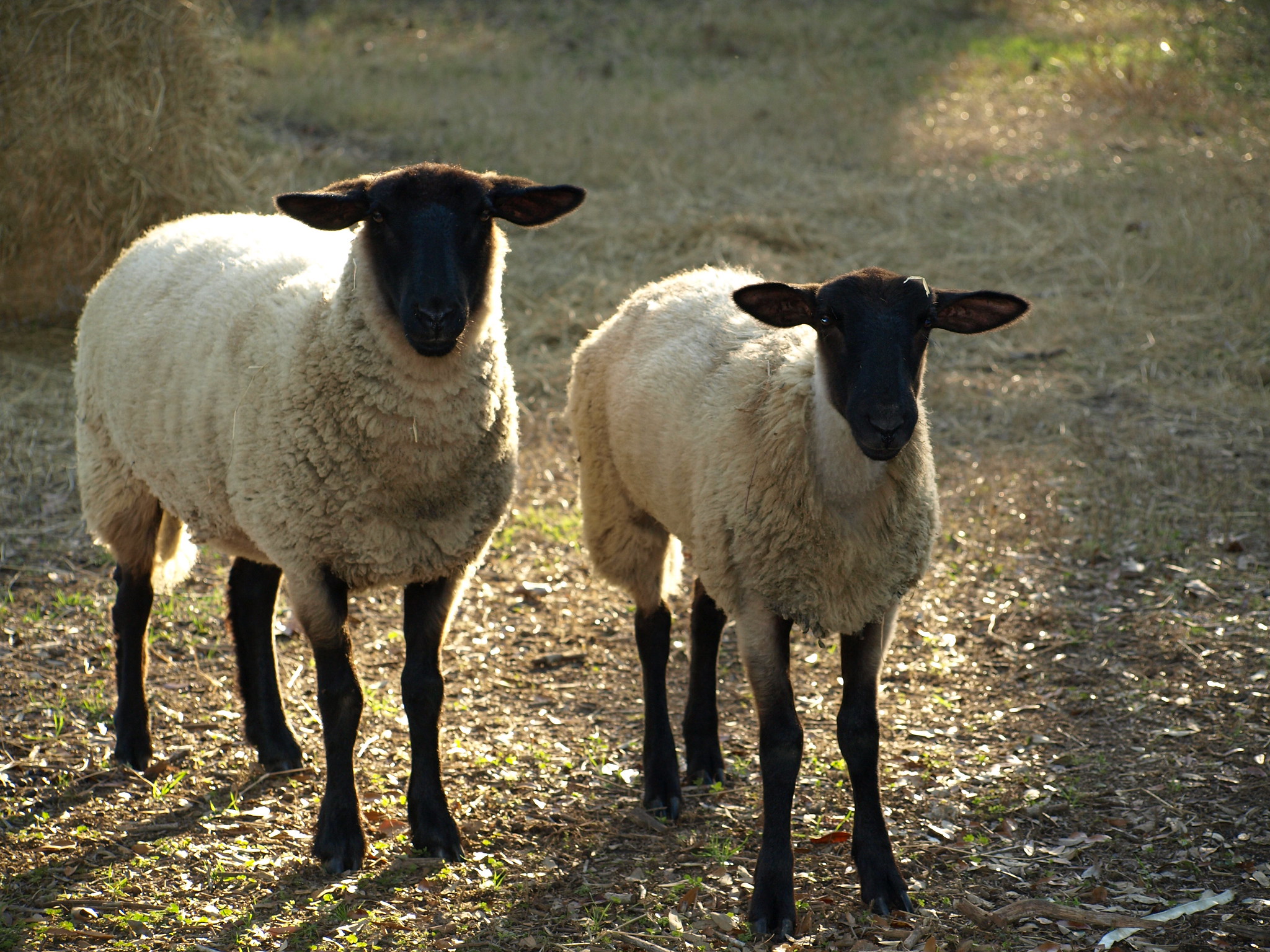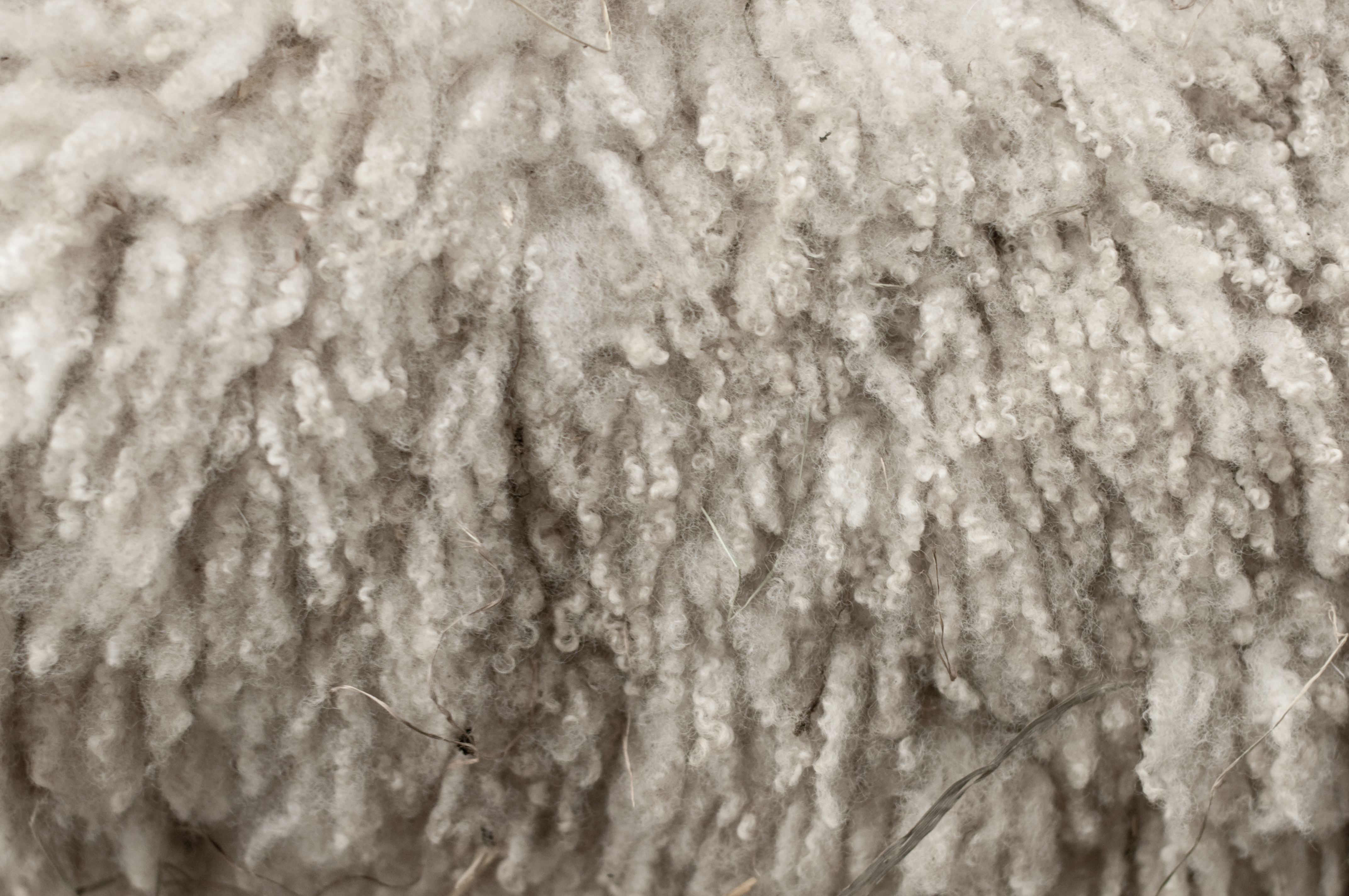|
Finnsheep
The Finnish Landrace, Finn or Finnsheep is a breed of domestic sheep native to Finland. It is one of several Northern European short-tailed sheep breeds, but is notable for its high incidence of multiple births – it is common for a ewe to have three, four, or even five lambs at once. The lambs are often small, but are vigorous at birth and grow well. The lambs mature early and can be mated at six months of age. Ewes commonly breed out of season and some may lamb twice in a year. The breed belongs to the group of Northern European short-tailed sheep, which also includes Shetland, Icelandic, Romanov, Spaelsau, and several other breeds. The Finnsheep is often used in crossbreeding programs to increase lambing percentage, and Finnsheep blood is found in many of the newer breeds. Characteristics Wool The fineness of Finnsheep wool has some individual variation, but the American Sheep Industry’s Wool Council ranks Finnsheep in the fine end of the medium wool category.'' ... [...More Info...] [...Related Items...] OR: [Wikipedia] [Google] [Baidu] |
Northern European Short-tailed Sheep
The Northern European short-tailed sheep are a group of traditional sheep breeds or types found in Northern Europe, mainly in the British Isles, Scandinavia, Greenland and the area around the Baltic. They are thought to be derived from the first sheep brought to Europe by early farmers, and for thousands of years they were the only type of sheep kept in Northern Europe. They are hardy sheep, adapted to harsh environments, but they are small and have been replaced in most areas with later types of larger, long-tailed sheep. Characteristics These sheep are generally small and have characteristic short "fluke-shaped" tails, broad at the base and tapering to a hair-covered tip. Their tails typically have 13 vertebrae compared with over 20 for other sheep; in most types the individual tail vertebrae are also shorter than those of long-tailed sheep. Their faces and legs are free of wool. The horns vary between breeds and often within them: they may be horned in both sexes, hor ... [...More Info...] [...Related Items...] OR: [Wikipedia] [Google] [Baidu] |
Finnish Dorset
A Finnish Dorset is a crossed-breed sheep, half Finnsheep, and half Dorset breed. Dolly the sheep, first mammal to be cloned Cloning is the process of producing individual organisms with identical or virtually identical DNA, either by natural or artificial means. In nature, some organisms produce clones through asexual reproduction. In the field of biotechnology, ... from an adult somatic cell, was a Finnish Dorset. References Sheep breeds {{sheep-stub ... [...More Info...] [...Related Items...] OR: [Wikipedia] [Google] [Baidu] |
Domestic Sheep
Sheep or domestic sheep (''Ovis aries'') are domesticated, ruminant mammals typically kept as livestock. Although the term ''sheep'' can apply to other species in the genus '' Ovis'', in everyday usage it almost always refers to domesticated sheep. Like all ruminants, sheep are members of the order Artiodactyla, the even-toed ungulates. Numbering a little over one billion, domestic sheep are also the most numerous species of sheep. An adult female is referred to as a ''ewe'' (), an intact male as a ''ram'', occasionally a ''tup'', a castrated male as a ''wether'', and a young sheep as a ''lamb''. Sheep are most likely descended from the wild mouflon of Europe and Asia, with Iran being a geographic envelope of the domestication center. One of the earliest animals to be domesticated for agricultural purposes, sheep are raised for fleeces, meat (lamb, hogget or mutton) and milk. A sheep's wool is the most widely used animal fiber, and is usually harvested by shearing. In Co ... [...More Info...] [...Related Items...] OR: [Wikipedia] [Google] [Baidu] |
Spælsau (sheep)
__NOTOC__ The Spælsau (Old Norwegian Short Tail Landrace, Gamalnorsk spæl Norwegian) is a breed of sheep from Norway. Many consider Spælsau to be the original breed of sheep in Norway, and it is one of the Northern European short-tailed sheep breeds. It is well adapted to the climate and was a domestic animal from the Iron Age. The spælsau stock is about 22% of the sheep in Norway. In 1912, to prevent extinction of the breed, two breeding stations were established. Icelandic sheep were crossed through semen imported in the 1960s and 1970s. Finnsheep and Faroe Island sheep were also used in the breeding program. This breed is raised primarily for meat. Characteristics Originally it is compact and lightly built and does not need much concentrated food. The meat has relatively little fat. The Spælsau gives rich milk, has a strong flock instinct, and manages well outdoors most of the year. But it is vulnerable to eye disease caused by eating the plant Bog Asphodel (''Narthe ... [...More Info...] [...Related Items...] OR: [Wikipedia] [Google] [Baidu] |
Sheep Breeds Originating In Finland
Sheep or domestic sheep (''Ovis aries'') are domesticated, ruminant mammals typically kept as livestock. Although the term ''sheep'' can apply to other species in the genus ''Ovis'', in everyday usage it almost always refers to domesticated sheep. Like all ruminants, sheep are members of the order Artiodactyla, the even-toed ungulates. Numbering a little over one billion, domestic sheep are also the most numerous species of sheep. An adult female is referred to as a ''ewe'' (), an intact male as a ''ram'', occasionally a ''tup'', a castrated male as a ''wether'', and a young sheep as a ''lamb''. Sheep are most likely descended from the wild mouflon of Europe and Asia, with Iran being a geographic envelope of the domestication center. One of the earliest animals to be domesticated for agricultural purposes, sheep are raised for fleeces, meat (lamb, hogget or mutton) and milk. A sheep's wool is the most widely used animal fiber, and is usually harvested by shearing. In Commonwea ... [...More Info...] [...Related Items...] OR: [Wikipedia] [Google] [Baidu] |
Wool
Wool is the textile fibre obtained from sheep and other mammals, especially goats, rabbits, and camelids. The term may also refer to inorganic materials, such as mineral wool and glass wool, that have properties similar to animal wool. As an animal fibre, wool consists of protein together with a small percentage of lipids. This makes it chemically quite distinct from cotton and other plant fibres, which are mainly cellulose. Characteristics Wool is produced by follicles which are small cells located in the skin. These follicles are located in the upper layer of the skin called the epidermis and push down into the second skin layer called the dermis as the wool fibers grow. Follicles can be classed as either primary or secondary follicles. Primary follicles produce three types of fiber: kemp Kemp may refer to: Places * Kemp, Illinois * Kemp, Ohio * Kemp, Oklahoma * Kemp, Texas * Kemp Land and Kemp Coast, Antarctica * Kemp Town, a 19th-century estate in East Sussex, En ... [...More Info...] [...Related Items...] OR: [Wikipedia] [Google] [Baidu] |
Romanov (sheep)
Romanov is a breed of domestic sheep originating from the Upper Volga region in Russia. These domestic sheep got the name Romanov from the town of the same name. In the 18th century, these sheep were first noticed outside of Russia. Soon after, they were imported to Germany and then to France. In 1980, 14 ewes and 4 rams were bought by the Canadian government and were quarantined for 5 years. After the testing, some of the Romanov breed was brought into the United States. The distribution of this unique breed is worldwide. This breed is raised primarily for meat. Appearance and condition These sheep are adapted to the cold inland climate and local feeding. Romanovs are one of the Northern European short-tailed sheep breeds. They are pure black when they are born, but as they grow older the color quickly changes to gray. The average weight of a male Romanov is 55-80 kilograms and the average weight of a female is 40-50 kilograms. Reproduction By 3–4 months old, Romanovs a ... [...More Info...] [...Related Items...] OR: [Wikipedia] [Google] [Baidu] |
Icelandic Sheep
The Icelandic is the Icelandic breed of domestic sheep. It belongs to the Northern European Short-tailed group of sheep, and is larger than most breeds in that group. It is thought that it was introduced to Iceland by Vikings in the late ninth or early tenth century. It is generally short-legged and stocky, slender and light-boned, and usually horned, although polled and polycerate animals can occur; there is a polled strain, the Kleifa. The fleece is double-coated and may be white or a variety of other colors; the face and legs are without wool. The sheep are highly resistant to cold, and are generally left unshorn for the winter. Icelandic ewes are highly prolific, with a lambing percentage of 175–220%. The Þoka (Thoka) gene is carried by some ewes, which may give birth to large litters of lambs. A unique strain within the population is the Leader sheep, which carries a hereditary ability or predisposition to lead other sheep safely over dangerous ground. History ... [...More Info...] [...Related Items...] OR: [Wikipedia] [Google] [Baidu] |





